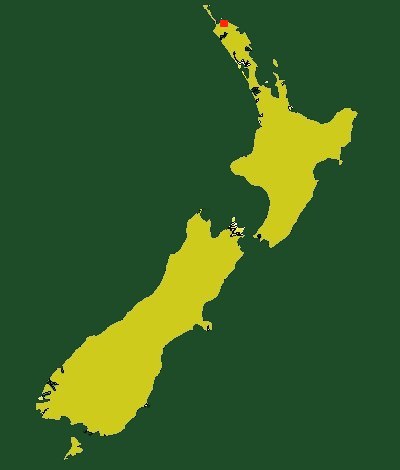Butler's Point
Butler Point: Colonial Store
Contents
Project Background
Captain William Butler
Captain Butler(1814-1875) married Eliza Merritt and moved to Mangonui permanently in February 1840. In 1845 Captain William Butler bought 20 acres of land in Butler Point and by 1848 was settled in and living on the premises. During his time in Mangonui, Captain Butler ran his store, was a Justice of the Peace and for a short period a member of Parliament. AFter resigning from Parliament he went back to working at the store and trading with chips that came in. Finally, on March 4th, 1875, due to an accident he had a year earlier that severely damaged his chest William Butler died at the age of 61.Proof of a Store
- In her book "The Butler House, Mangonui 1847-1990", Janice Mongford notes that there was a store on the foreshore during Butler's time.
- 1986 Site Report by Joan Maingay that site N7/326 was the possible location of this store
Historical Records
- A watercolor done by John Kinder in 1858
- Sketch of the foreshore by Henry Wynard
- An Advertisement for Butler's Store in "The Daily Southern Cross"
Location and Date
- Excavation N7/326
- Butler Point, Northland Region, New Zealand
- February 6-22, 1999
Excavators
Project Directors:
Archaeologists
Other contributers:
- Rod Wallace-Technical Director
- Geoffrey Irwin
- Tim Mackrell-Photographer
- Charles Lindo, Leticia Ferguson- Property Owners
Methodology
- Excavation 2-3 weeks
- Materials taken back to the university and analyzed--cleaning, sorting, restoring
- Artefacts Documented and reported on
- Artefacts dated and linked to historical context
Findings
Glass
Unidentified Glass
The majority of the glass found at the site fell into this category. Most of the unidentified glass found was in areas one and three. Area four also contained a large amount of unidentified glass. In total there wer 6,656 pieces of unidentified glass recovered from the site. The type of glass recovered tended to fall into the categories of green/brown, aqua, clear, window or other. The "green" category of glass is non-beer related alcohol containers. The later documentation showed that 51 percent of the glass found fell into this category.
Window Glass
There were 1,577 pieces of window glass recovered from site N7/326. Areas one, three and four all contained quite a bit of window glass. This led Archaeologists to believe that there may have been at least one building there, possibly covering areas three and four because of the postholes that were also found there. The window glass found tended to be very thin much like the window glass used in Georgian style buildings.
Identified Glass
Most of the identified pieces of glass recovered were alcohol-related. Out of the 92 pieces found 54 were in some way related to alcohol.
Dating
Historical records, knowledge of when technological innovations came about, and comparison of sites from the same time period all helped in trying to date the findings at Butler's Point. Of the glass the total date range was 1810-1870 but got narrowed down to 1840-1864 after finding that a majority of the glass is from that time period. According to the advertisement in "The Daily Southen Cross" Butler's store would have been here by at least 1848, which fits in with the datign of the glass in the area. the majority of the black-glass beer bottles at the site were pontilled; something that was done between 1840 and 1850. Many of the technological innovations that the glass bottles portrayed were phased out by about 1870, fitting right in with the estimated time of store closure.
Clay Pipes
Pipe Manufacturers
The clay pipes found on the property were often imprinted with the name of their manufacturer[1].It is due to this that researchers were able to discover that the pipes came from 5 main manufacturers including: Mcdougall, Thomas White, Murray, Davidson, and TD. these manufacturers were almost all from Scotland and the variety was limited. This shows that the pipes were probably being ordered in mass quantity from Auckland.
Dating
The whole lot of pipes is from before 1862 based on when the pipes found tended to be manufactured. another telling feature of the site is that no briar pipes were found. Briar pipes became popular in the late 19th century because of their durability, therefore the site must be earlier than the late 19th century.
Nails and Miscellaneous Iron
Iron Nails
2,673 iron nails were dug up at the site. Of these, the ones that were identifiable were mostly square and round-head nails. The majority of these were about one to two inches long. As they were all highly corroded due to time, it was difficult to fully identify what they may have been used for or what type they were. Tacks and their larger counterparts called "clouts", which were mainly used for building were found mostly in areas one and three.
Copper Nails
Distribution
Spikes
Miscellaneous
Wood and Natural Materials
Wood
Gum
Charcoal
Slate
Bricks
Animal Remains
Distribution
Age at Death
Butchery Evidence
Buttons
Location
Types
Dating
Miscellaneous
Conclusion
- The large amount of green glass found at Butler's Point shows that alcohol played a large role in the area and there may have been a place selling alochol near the store.
- Based on where the majority of the postholes and building materials such as nails were found, it is most likely the building was in areas one and three.
References
McManus, Tane K. Butler's Point, Site N7/326, the Archaeology and Analysis of a Colonial Store. Diss. University of Auckland, 2002. Print.

